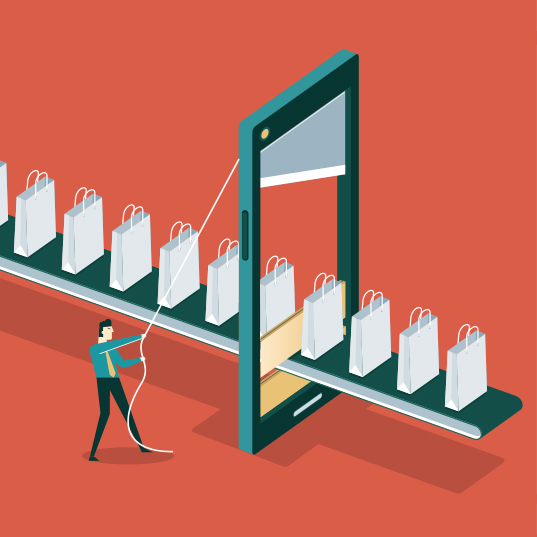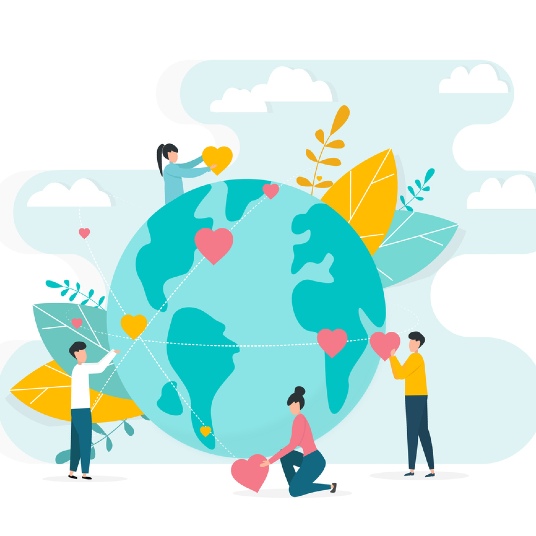Buy with the heart, but think planet with the head
Through our decisions we can take care of the environment and mitigate the effects of climate change. Do you join responsible consumption?
Whether it's decorating the Christmas tree with sparkling lights, building a snowman, or singing Christmas carols to your heart's content, we all have our favorite Christmas traditions. In Friesland, a province in the north of the Netherlands, an iconic ice skating race used to be held over 200 km and 11 cities. It's been 24 years since the last race. Climate change is jeopardizing this beloved winter tradition.
There are other traditions that are more related to the causes of climate change than to its effects. We talk about the gifts that, year after year, we leave under the Christmas trees. We don't want to be the Grinch, but today we will talk about why Christmas has become an enemy of responsible consumption and sustainable development
What will I learn from this article?
- This Christmas say ‘yes’ to responsible buying
- Are such celebrations only about boosting consumer spending?
- From passive to responsible consumer
‘No’ to toxic love, ‘yes’ to responsible buying
 The impact of consumption on climate change is undeniable. It has been calculated that maintaining our lifestyle means consuming, in less than 7 months, the resources the Earth generates in a year. Remember Earth Overshoot Day which in 2021 fell on the 29th of July?
The impact of consumption on climate change is undeniable. It has been calculated that maintaining our lifestyle means consuming, in less than 7 months, the resources the Earth generates in a year. Remember Earth Overshoot Day which in 2021 fell on the 29th of July?
Our current economic model uses a great deal of resources and has a high environmental impact on the planet, presenting us with great contradictions as far as sustainable development is concerned. The problem is in the way we produce and consume and it is even more acute on certain dates, like Valentine’s Day, a tradition that appears to have dwindled into little more than gift buying.
So much so, that Christmas has become a multi-billion dollar industry. In the United States alone, the National Retail Federation estimates that Americans will spend between $942 and $960 billion during the holiday season.
“In the United States alone, it is expected that around 960 billion dollars will be spent to celebrate Christmas”
Our purpose is not to ruin the holidays, but to invite you to reflect on what is the most sustainable way to express your feelings for that special someone. Consumption seeks to advance in responsible models, better for people and for the planet.
Are such celebrations only about boosting consumer spending?
We buy, we give, we buy, we consume. It’s not just about Valentine’s Day, this is repeated throughout the year. Christmas, Carnival, birthdays, Father’s and Mother’s Days, Halloween, and so on. And now there are days set aside purely for consumption, such as Black Friday and Cyber Monday.
Any day that has become a popular celebration ends up being subject to the same process and serves the same end: an excuse to sell, and then sell more.
We buy compulsively and emotionally. A modus operandi that turns us into victims of the consumer society, as we have seen in previous articles. It’s a worrying state of affairs. We live in a linear economy, dilapidating natural resources and generating tonnes of waste.
Did you know that a third of all resources extracted from the Earth are linked to the production of commercial goods? According to a report published in 2020, by the UN Environment Programme’s Environment and Trade Hub and the International Resource Panel, the material flows required for trade in 2017 amounted to three times more than the trade itself. In other words, 35 billion tonnes of material resources were extracted worldwide to produce 11 billion tonnes of directly commercialized goods. And this also means that a third of the total of 92 billion tonnes of material resources extracted by the global economy this year will go to produce commercial goods.
This data leaves no doubt that the extraction and processing of natural resources does not only contribute to Earth overshoot, it also increases waste, emissions, biodiversity loss, soil degradation and water pollution.
Which is why we need to tackle the adverse environmental impacts of trade and ensure the system helps boost the transition toward a fairer and more sustainable circular economy.
From passive to responsible consumer
Consumers have power. A broad power increasingly exercised when taking a purchasing decision. Even if we cannot intervene in the production process, we can buy and support more sustainable brands and products.
Responsible consumption shows another way of doing things is possible, and empowers the consumer to make conscious decisions, as to how much and what to buy, and how it is produced. It is based on two maxims: consume less, and, what you do consume, do it sustainably.
“Responsible consumption is based on consuming less and consuming sustainably”
 But people, although they have the opportunity to be part of the change, are not able to switch through all the gears that make the consumer society machine work. The configuration of the industrial productive model, as well as laws and public policies, needs to be leveraged to correct the drift that leads us to aggravate climate change and consume the planet’s resources unnecessarily and irresponsibly.
But people, although they have the opportunity to be part of the change, are not able to switch through all the gears that make the consumer society machine work. The configuration of the industrial productive model, as well as laws and public policies, needs to be leveraged to correct the drift that leads us to aggravate climate change and consume the planet’s resources unnecessarily and irresponsibly.
Having said that, we can contribute through our individual decision-making to promote change. So what does responsible consumption involve? How can we contribute to it?
- Buy local and prioritise seasonal products where food is concerned.
- Reduce unnecessary consumption.
- Shop out of necessity rather than because it’s fashionable.
- Find out the ecological footprint of products and services before you decide to buy them.
- Prioritise quality over quantity, especially with textiles, furniture and electro-domestic equipment.
- Search out energy efficient options.
- Choose products made from recycled materials.
Buying involves satisfying a need or desire, but it also activates a whole series of economic, social and environmental processes. In this sense, buying responsibly means questioning what you need and what you don’t. And, after this, select the products not only for their price or quality, but also because they are respectful to the environment and the companies that make them are furthering the Sustainable Development Goals (SDGs).
It is through our own decisions that we can protect the environment and mitigate the effects of climate change. Will you join the movement for responsible consumption?

